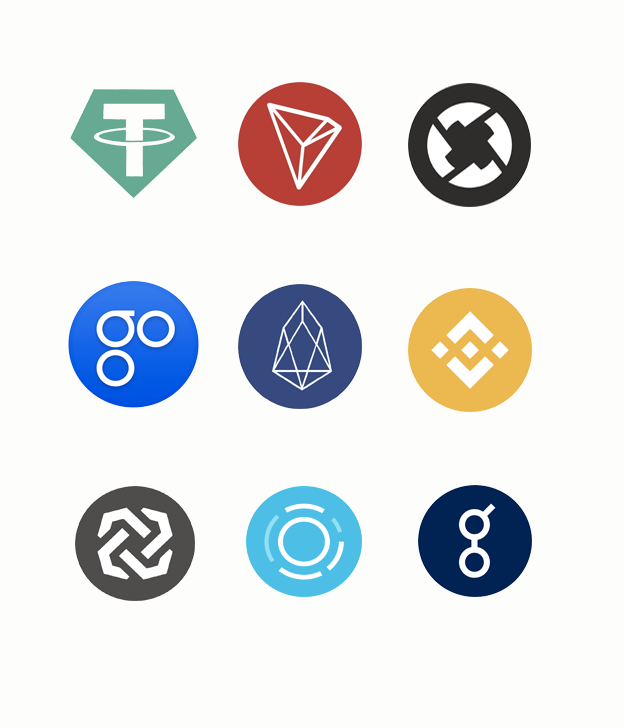Creating a Cryptocurrency
How to create a Cryptocurrency?
In this article lets look into the best ways followed in the industry for Creating a Cryptocurrency. Before we dive into the story lets keep in my mind a Cryptocurrency can be called using various terms: Crypto, Token, Coin etc.

Why do people want to create their own Cryptocurrency?
There can be a plethora of reasons on why someone would be interested in creating a Cryptocurrency. They would want to create Decentralised Finance DeFi project by generating their own tokens. Or they would want to build a business model with their own tokens powering it. Or they would want to raise an investment by launching an initial coin offering. And there are still many reasons that can be filed with regards to this question.
What different types of Crypto can be created?
The different types of Tokens that can be created are:
- Utility Tokens
These are tokens that are used an an utility inside a business model. Or for the purpose of transacting a value to facilitate a utility. Creating a cryptocurrency that enables an utility inside a system is done majority. Several coins that exist in the crypto-sphere are utility tokens. Whatever business model it may be the tokens are designed accordingly to have a seamless flow in the system. Some of the biggest cryptocurrency in the market are utility tokens. To name a few: ETHER, Stellar, Tron, Polkadot etc. You can create a cryptocurrency that is a utility type on any blockchain or protocol. Though a bulk of these utility tokens are built as ERC20 tokens, there are many other promising blockchain platforms to create these tokens as well. Already we are seeing Bitcoin and cryptocurrency derivatives being created and actively traded in exchanges. The CME group in-fact has start trading bitcoin futures and is a big hit among all its usual financial instruments.
- Security Tokens
Unlike utility tokens, these represent a fractional ownership in an entity. Due to the nature of security tokens, it is a requirement that such security tokens need to abide with the securities law of the land. When creating a cryptocurrency that is a security token, all the regulatory compliance needs to be considered and proper auditing and reporting needs to be done. Security tokens can also be created on any blockchain protocol with proper smart contracts governing the ownership and transfer of such tokens.
Asset Backed Tokens
In short people call it ABT’s. Asset backed tokens are yet to take off big time at the time of writing this topic. But we certainly know of many projects that are silently rocking in many sectors. In a typical ABT, the token created is backed by a tangible asset. The reason for this token to be of prime importance is the fluidity it provides to the underlying Asset. As we all know a majority of assets are immovable and bulky thus reducing its tradability or transfer. Also its difficult to break down many assets and distribute ownership. For example: Real Estate, Precious metals, intellectual property, properties etc. If such an asset is converted to digital tokens, it provides a total different outlook. Each token can be programmed to represent a fraction of the underlying asset. And once the essence of the asset enters the digital tokens, it gets the power to freely be traded. Creating a Cryptocurrency that is an ABT would also require to integrate sophisticated smart contracts inside the digital token. Any rules and clauses of ownership, transfer conditions, regulatory compliance can be spelled out in the smart contract. The advantage of this is that as the tokens are traded and exchanged, the inbuilt conditions can automatically be monitoring the tokens all along. And events can be fired whenever certain conditions are met, thus holding the trust and quality of the underlying asset.

Equity Tokens.
After creating a cryptocurrency if you purely back it with just equity of an entity it is called equity tokens. Experts say the future of share and stock trading can very well move the blockchain space thanks to the concept of equity tokens. Any regulatory compliance, conditions, investor eligibility etc. can be easily programmed into the equity tokens using smart contracts. Moreover equity tokens can help in creating a more global investment pattern and help investors own their equity in a more decentralised manner.
Non-Fungible Tokens ( NFTs )
Lets take the dollar for example. The dollar you have and the one I have are not much different at all ( except for a few numbers ). But in general identity wise and value wise, I can exchange your dollar with mine and still the value remains the same for both the bills. Same is with Bitcoin, Ether, Stellar etc. All of them are fungible and can be exchanged without loosing value. But in the real world there are certain items that are very unique. Sometimes there can never exist another piece of the same. Take an art from Da Vinci. Only one of that art can ever exist. A duplicate can only be a duplicate and can never have the value of the original. IN simple words its Non- Fungible. NFTs or Non-Fungible Tokens were invented to allow anyone to create unique tokens representing that itself. A NFT can either just exist in a digital version representing a digital asset. Or it can also be created to represent an offline world asset Ex: Art, Collectibles, Real Estate etc. These NFTs can be transferred or sold to another person. And the entire journey of the NFT can be tracked on the ledger with the information of all the owners. In 2021 the concept of NFTs have been on the rise with many new applications getting created. One of the earliest commercial hit one was Crypto Kitty’s. Creating a cryptocurrency that is an NFT is possible with the right protocols. Ethereum has a separate standard for this called the ERC 721.

FAQ
Which is the best platform to create tokens on?
Well, that is actually a personal preference to certain extend. Each blockchain has its own pros and cons. The most used protocol for creating a cryptocurrency used to be Ethereum. But with the proliferation of the gas fee, it has become nearly impossible for everyone to mint their crypto using Ethereum. To the rescue has come various other blockchains like Binance Smart Chain ( BSC ), Tron, Waves, Stellar etc. Each one of these have their own advantage. BSC for example is relatively cheap when creating a cryptocurrency on. Tron is also economical to create a cryptocurrency, but they have the irritating energy issue, wherein you would need to lock in certain number of TRX tokens to supply apt energy ( this is apart from the gas fee ). Stellar is very good for creating Asset backed tokens. Waves is gaining momentum off-late with their user friendly UX for creating tokens and the fascinating concept of RIDE scripting. For people even looking to dive deep technically Polkadot is a good protocol to go with.
How to create your own cryptocurrency using Binance Smart Chain ( BSC )?
Binance Smart Chain ( BSC ) is a new high performing blockchain launched by the famous Exchange Binance. The chain is fast and guzzles much lesser gas than Ethereum. One point to note here is that the BSC is a fork of Ethereum with much better improvements. So programatically minting a token on the BSC is more or less similar to creating a cryptocurrency on the ETH chain.The standard that you get your tokens in are BEP20 tokens. The wallet that holds these BEP20 tokens should have the BSC main net configured, which is a very simple step for anyone to do quickly. Also the token can be easily listed on the Binance Dex Exchange as it is a token with the BEP20 standard. Also the tokens can be listed quickly in a variety of DEX’s like Pancake Swap etc.
How to create your cryptocurrency using Polkadot Blockchain?
Creating a cryptocurrency on Polkadot is very much possible. The best way to create a cryptocurrency or a token on Polkadot is to become a parachain on the main Polkadot relay chain. This has certain incredible advantages than having an ERC20 or BEP20 token. If you are able to get a slot for running a parachain on Polkadot, you are also allowed to have your own native token for your parachain. This will also make you an individual blockchain by yourself that has its own token. Also your parachain will enjoy all the benefits of the main Polkadot chain like the credibility, instant traction, security etc. Also since Polkadot does not interfere with the policies of the parachain, you can set your own rules. Your blockchain can have the ability to stake your chains native tokens, create yield farms, have its own governance principles etc. And since you will be running your own node, you can also decide to make your chain private or public.
